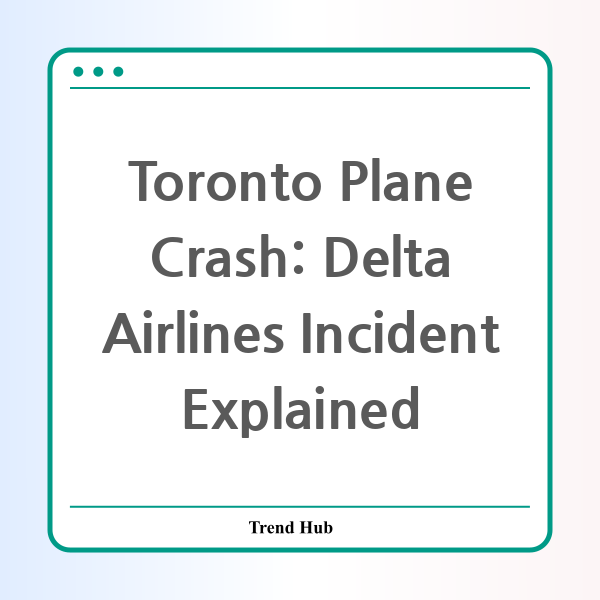* This website participates in the Amazon Affiliate Program and earns from qualifying purchases.

What happens when a flight turns into an unexpected emergency? On February 17, 2025, Toronto Pearson International Airport faced a significant incident as a Delta Airlines plane arriving from Minneapolis crashed on landing. This shocking event has not only drawn the attention of emergency responders but also raised numerous questions about safety protocols and the implications for air travel.
Paramedics have reported that multiple people sustained injuries, with reports indicating that up to eight individuals were affected by the crash. While the extent of these injuries has not been fully assessed, the situation underscores the urgency that comes with aviation emergencies. Thankfully, all passengers and crew members have been accounted for, and emergency teams promptly responded to the scene.
This incident took place at one of North America’s busiest airports, reminding us of the complexities involved in air travel. Toronto Pearson, which has been a hub for international travelers, is now in the spotlight as investigations proceed. Peel police are working with paramedics to establish a staging area off the runway, ensuring that all necessary resources are available to manage the aftermath of the crash effectively.
While this particular accident raises immediate concerns regarding passenger safety, it also highlights the critical nature of emergency preparedness in aviation. Airports and airlines invest heavily in training and simulations to ensure that both crew and emergency responders are ready for scenarios such as these. The response observed from emergency teams illustrates the effectiveness of these preparations, but it also leaves many contemplating what could have gone wrong during the landing.
As details continue to emerge, it is essential to understand the broader implications of such incidents. Flight safety protocols, maintenance checks, and pilot training are paramount in preventing accidents. Each incident serves as a reminder of the need for stringent regulations and oversight within the aviation industry.
Let’s also consider the emotional and psychological impact that plane crashes can have on passengers, their families, and the wider aviation community. While physical injuries are a primary focus during such events, the long-term effects of trauma caused by such emergencies can be profound. Support systems and counseling resources for those affected become crucial in the days following such incidents.
In conclusion, the Delta Airlines plane crash at Toronto Pearson is a vivid reminder of the complexities and risks associated with air travel. As investigations proceed, the priority remains ensuring the safety and welfare of all affected. The aviation industry must learn from these occurrences to improve future flight safety and emergency response strategies. Updates from authorities will continue to shed light on this unfolding situation, guiding public understanding and reassuring travelers about the safety measures in place.
* This website participates in the Amazon Affiliate Program and earns from qualifying purchases.